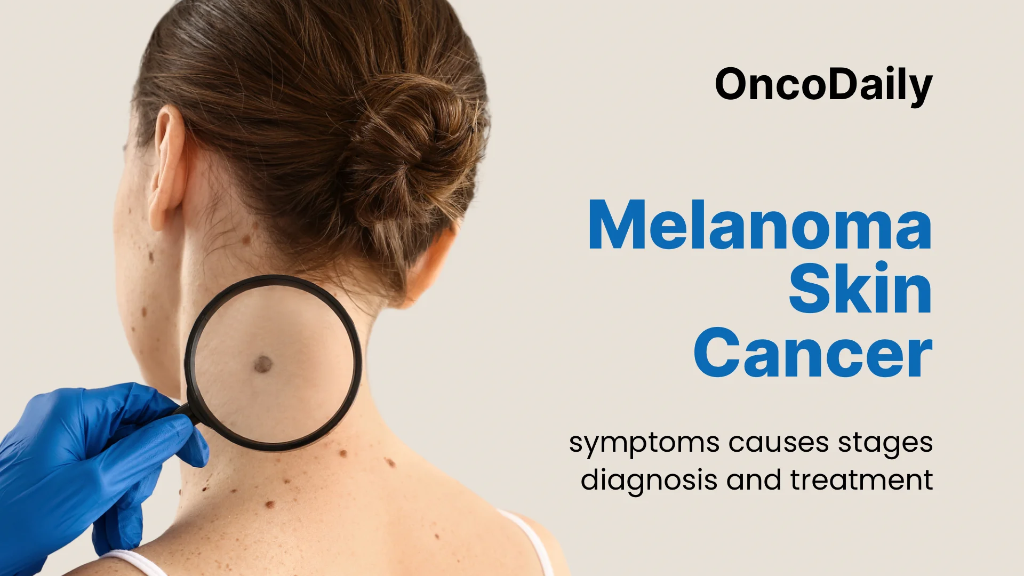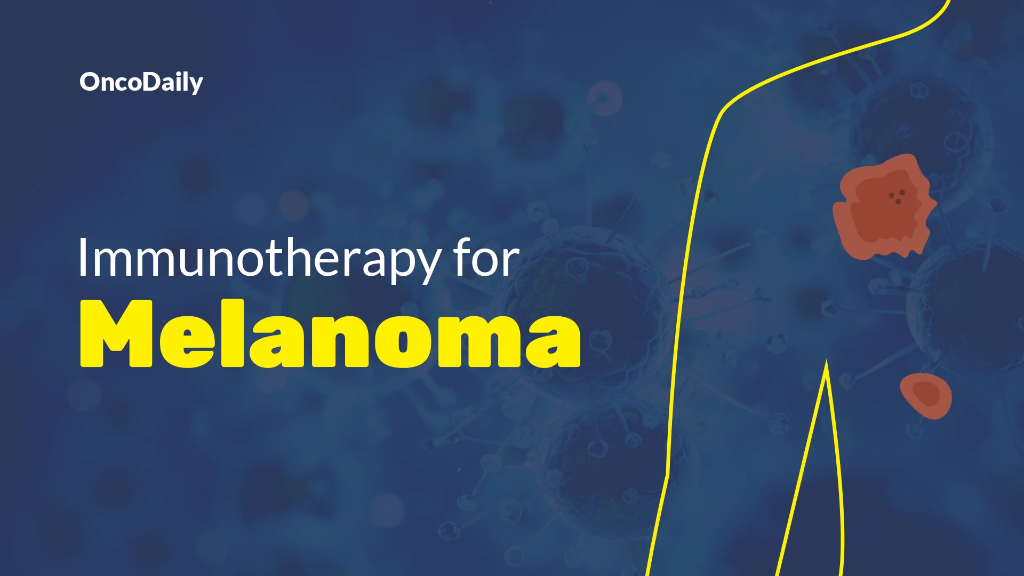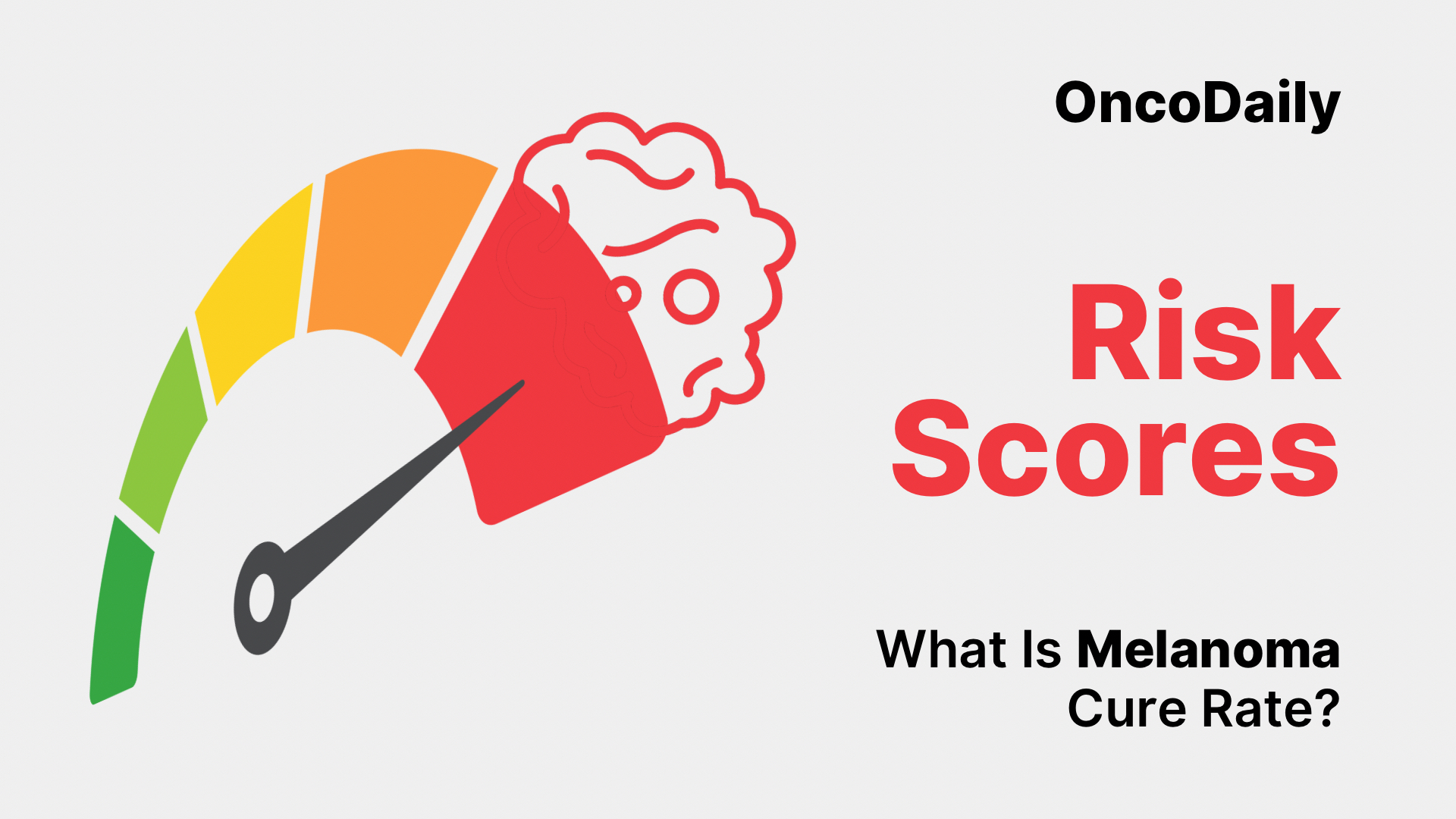Melanoma is the most aggressive form of skin cancer, originating from melanocytes — the pigment-producing cells of the skin. Although it represents only a small percentage of all skin cancer cases, it causes the majority of skin cancer deaths worldwide. According to the World Health Organization (WHO, 2024), over 330,000 new cases of melanoma are diagnosed annually, with more than 58,000 deaths.
Early detection plays a crucial role in determining the melanoma cure rate. When identified at an early stage, melanoma is highly curable. However, once it spreads to lymph nodes or distant organs, it becomes far more difficult to treat.

Read About Melanoma on OncoDaily
What Does Cure Mean in Melanoma?
In oncology, “cure” means that there are no detectable cancer cells in the body and that the patient remains disease-free for a long period — typically five years or more. For melanoma, the term “cure” depends heavily on stage at diagnosis and response to treatment.
The melanoma cure rate is highest in the earliest stages when surgery alone can remove all cancer cells. In advanced or metastatic cases, modern immunotherapy and targeted therapies have transformed survival outcomes, offering some patients long-term remission that was once considered impossible.
Melanoma Cure Rate by Stage
The melanoma cure rate varies widely by stage at diagnosis:
- Stage 0 (in situ): Nearly 100% cure rate with surgical excision, as cancer is confined to the outer skin layer.
- Stage I–II (localized): Cure rates range from 90% to 95%, depending on tumor thickness and ulceration.
- Stage III (regional spread): Cure rates drop to 60–80%, influenced by lymph node involvement.
- Stage IV (metastatic): Historically less than 10%, but with immunotherapy, long-term survival has improved to 30–50% in selected patients (Larkin et al., 2023).
This dramatic improvement in advanced-stage outcomes has reshaped the modern understanding of the melanoma cure rate.
Surgical Treatment and Cure Potential
Surgery is the cornerstone of cure in early-stage melanoma. Wide local excision with appropriate margins can completely eradicate the disease in most localized cases. Sentinel lymph node biopsy is often performed to check for microscopic spread.
For Stage I and II melanoma, the melanoma cure rate after surgery alone exceeds 90%. Even for patients with limited lymph node involvement, surgery followed by adjuvant immunotherapy can lead to long-term remission.
The Role of Immunotherapy
Immunotherapy has revolutionized melanoma treatment and significantly improved cure rates. Checkpoint inhibitors such as nivolumab, pembrolizumab, and ipilimumab activate the immune system to recognize and destroy cancer cells.
Clinical trials like KEYNOTE-054 and CheckMate 067 demonstrated durable remissions in patients with advanced or metastatic melanoma, with 5-year survival rates exceeding 50% for combination immunotherapy (Larkin et al., 2023).
These advances have redefined the melanoma cure rate—for some patients, immunotherapy leads to complete remission that persists for many years after treatment ends.

Read About Immunotherapy for Melanoma on OncoDaily
Targeted Therapy and Cure Rate Improvement
For patients with BRAF-mutated melanoma, targeted therapies such as dabrafenib plus trametinib or encorafenib plus binimetinib directly inhibit tumor growth. These combinations produce high response rates and can induce long-term disease control when combined with immunotherapy.
Although relapses remain possible, these treatments have raised the melanoma cure rate in advanced disease, offering hope to patients who once had few options.
Adjuvant and Neoadjuvant Therapies
After surgery, adjuvant (post-surgical) therapy aims to prevent recurrence. Studies show that adjuvant immunotherapy with pembrolizumab or nivolumab significantly improves recurrence-free survival.
Neoadjuvant (pre-surgical) immunotherapy is also being tested in clinical trials, showing promising results in shrinking tumors before surgery and increasing the melanoma cure rate in high-risk patients.
Cure in Metastatic Melanoma: A New Reality
Before 2011, metastatic melanoma was nearly incurable. Average survival was less than a year. Today, thanks to immunotherapy and targeted therapy, some patients with Stage IV melanoma experience complete and durable remissions lasting over a decade.
In long-term analyses, 20–30% of advanced melanoma patients treated with checkpoint inhibitors remain alive and disease-free after 10 years (Hodi et al., 2022). These findings suggest that functional cures are possible — a remarkable transformation in the melanoma cure rate paradigm.
Factors Affecting Melanoma Cure Rate
Several factors influence the melanoma cure rate, including:
- Stage at diagnosis: Early detection remains the most critical determinant.
- Tumor thickness (Breslow depth): Thinner melanomas have higher cure rates.
- Ulceration and mitotic rate: Aggressive biological features lower the chance of cure.
- Mutation profile: Presence of targetable mutations like BRAF or NRAS can improve response to modern therapies.
- Patient health and immune status: A strong immune system improves long-term outcomes.
Early Detection and Prevention
Because melanoma often develops in visible areas of the skin, early detection is achievable through regular self-examination and dermatologist visits. Identifying changes in moles — especially using the “ABCDE” rule (Asymmetry, Border, Color, Diameter, Evolving) — allows earlier diagnosis and treatment.
Early detection directly increases the melanoma cure rate, turning what could be a life-threatening disease into one that is almost always curable.
Survivorship and Long-Term Outlook
Many patients who achieve remission from melanoma live long, healthy lives. However, ongoing follow-up is essential, as recurrence can occur years after treatment. Regular dermatologic exams and imaging when indicated help maintain vigilance.
Survivors should also practice lifelong sun protection and skin monitoring to prevent new melanomas. Quality of life generally improves dramatically once remission is achieved, reinforcing the progress in the melanoma cure rate across all stages.
Future Directions in Melanoma Treatment
Research continues to improve outcomes through combination therapy, personalized immunotherapy, and tumor vaccines. Advances in liquid biopsy, artificial intelligence–based skin imaging, and T-cell–based therapies hold promise for detecting minimal residual disease and achieving even higher cure rates.
The future goal of melanoma care is not just prolonging life but ensuring that the melanoma cure rate continues to rise through innovation and early diagnosis.
Conclusion
The melanoma cure rate varies greatly depending on stage, tumor biology, and access to modern therapies. While early-stage melanoma is often completely curable with surgery, advanced melanoma is now treatable in ways that were unimaginable just a decade ago.
With the expanding success of immunotherapy, targeted therapy, and precision medicine, melanoma is evolving from a deadly cancer into a potentially curable disease for many patients. Awareness, prevention, and early detection remain the keys to achieving the highest possible melanoma cure rate.
You Can Watch More on OncoDaily Youtube TV
Written by Armen Gevorgyan, MD
